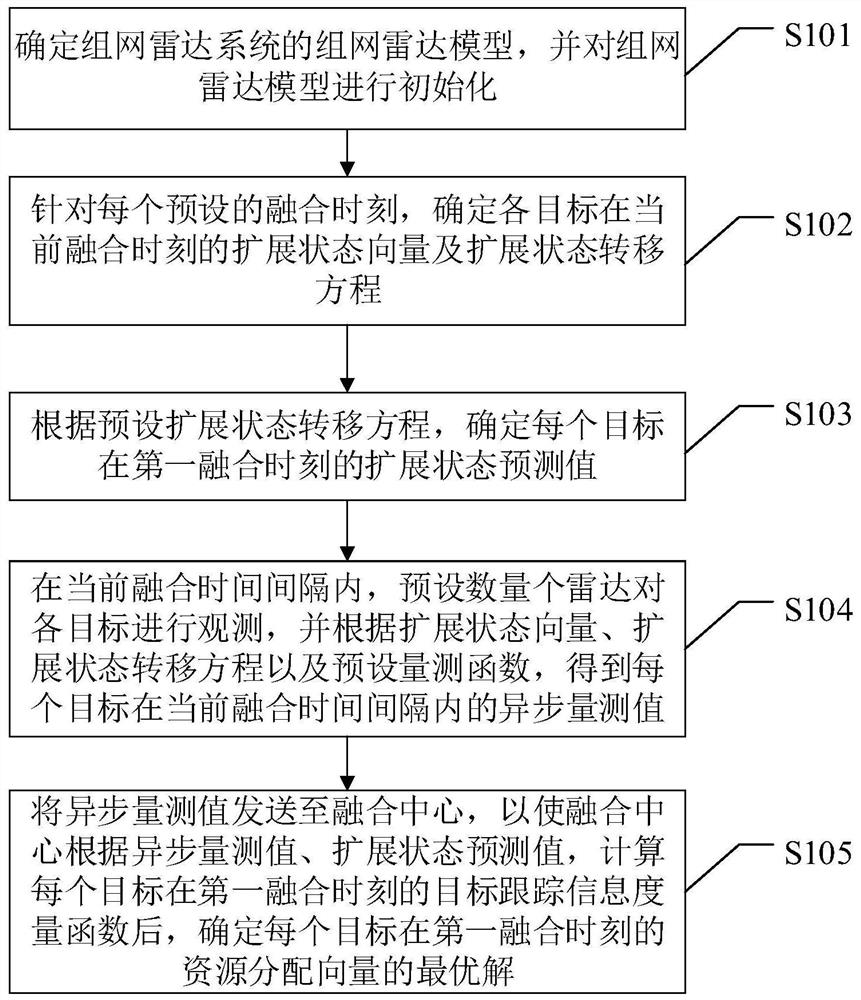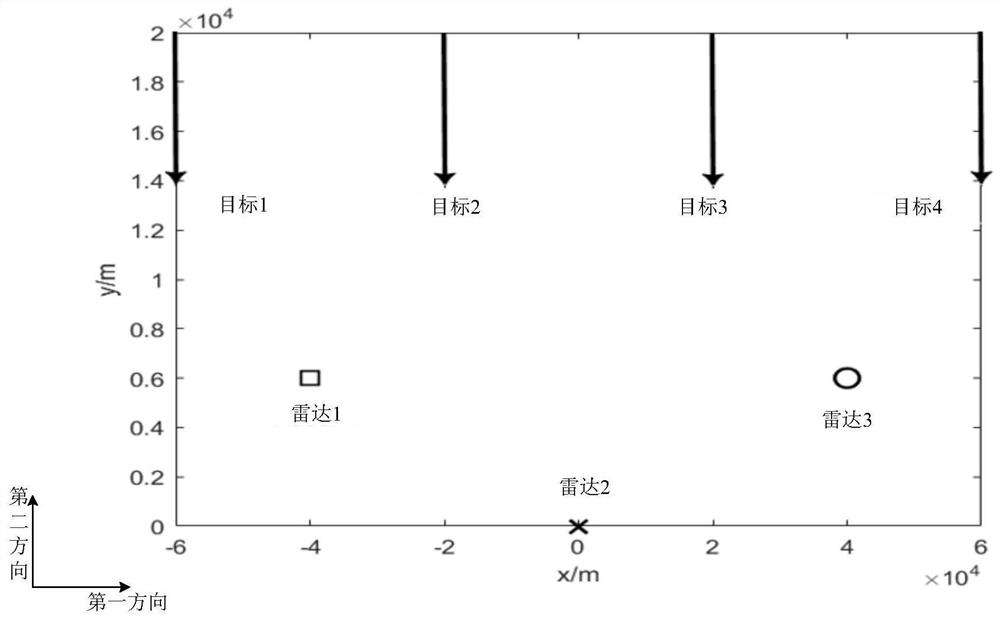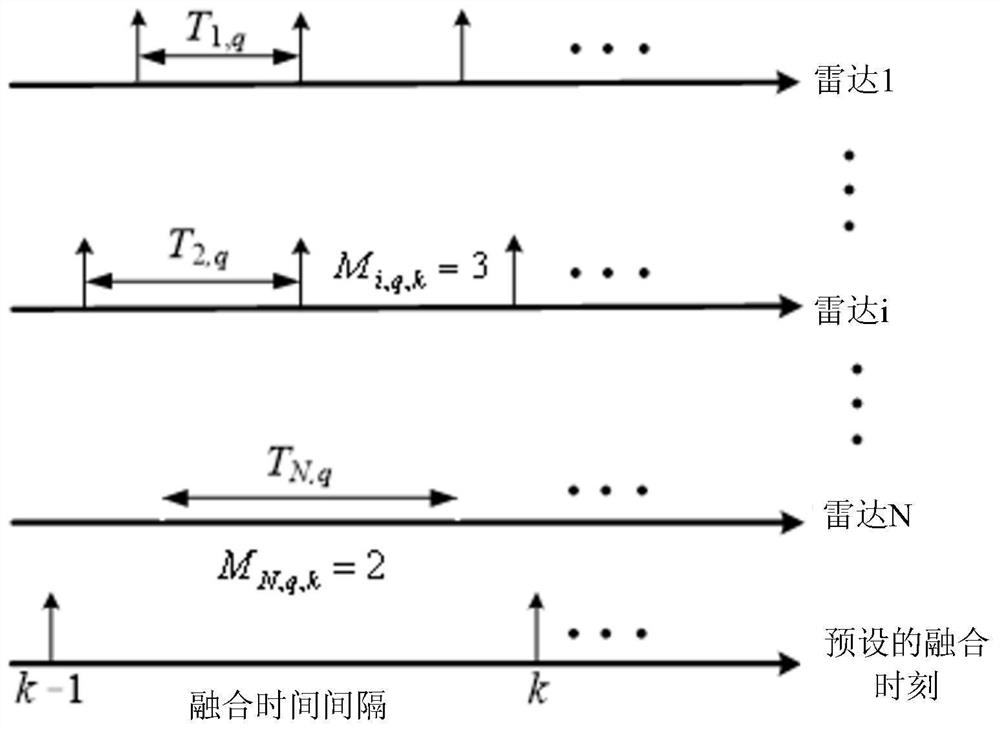Networking radar resource allocation method based on mutual information maximization
A technology for networking radar and resource allocation, applied in the field of radar, it can solve problems such as high computational complexity, difficulty in obtaining optimal solutions, and difficulty in adapting to real-time requirements, so as to overcome the large amount of computation and solve heterogeneous networking radars. System resource allocation problem and the effect of meeting real-time requirements
- Summary
- Abstract
- Description
- Claims
- Application Information
AI Technical Summary
Problems solved by technology
Method used
Image
Examples
Embodiment Construction
[0026] The present invention will be described in further detail below in conjunction with specific examples, but the embodiments of the present invention are not limited thereto.
[0027] like figure 1 As shown, the method for allocating networked radar resources based on mutual information maximization provided by the embodiment of the present invention is applied to a networked radar system. The networked radar system includes a fusion center and a preset number of radars. The detection area of the radar includes at least a goal;
[0028] The above-mentioned networked radar resource allocation method based on mutual information maximization includes:
[0029] S101. Determine the networked radar model of the networked radar system, and initialize the networked radar model;
[0030] S102. For each preset fusion moment, determine the extended state vector and the extended state transition equation of each target at the current fusion moment;
[0031] S103. Determine the p...
PUM
 Login to View More
Login to View More Abstract
Description
Claims
Application Information
 Login to View More
Login to View More - R&D
- Intellectual Property
- Life Sciences
- Materials
- Tech Scout
- Unparalleled Data Quality
- Higher Quality Content
- 60% Fewer Hallucinations
Browse by: Latest US Patents, China's latest patents, Technical Efficacy Thesaurus, Application Domain, Technology Topic, Popular Technical Reports.
© 2025 PatSnap. All rights reserved.Legal|Privacy policy|Modern Slavery Act Transparency Statement|Sitemap|About US| Contact US: help@patsnap.com



